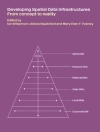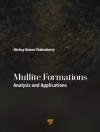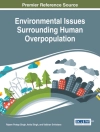The growing potential of GIS for supporting policing and crime reduction is now being recognised by a broader community. GIS can be employed at different levels to support operational policing, tactical crime mapping, detection, and wider-ranging strategic analyses. With the use of GIS for crime mapping increasing, this book provides a definitive reference.
GIS and Crime Mapping provides essential information and reference material to support readers in developing and implementing crime mapping. Relevant case studies help demonstrate the key principles, concepts and applications of crime mapping.
This book combines the topics of theoretical principles, GIS, analytical techniques, data processing solutions, information sharing, problem-solving approaches, map design, and organisational structures for using crime mapping for policing and crime reduction. Delivered in an accessible style, topics are covered in a manner that underpins crime mapping use in the three broad areas of operations, tactics and strategy.
- Provides a complete start-to-finish coverage of crime mapping, including theory, scientific methodologies, analysis techniques and design principles.
- Includes a comprehensive presentation of crime mapping applications for operational, tactical and strategic purposes.
- Includes global case studies and examples to demonstrate good practice.
- Co-authored by Spencer Chainey, a leading researcher and consultant on GIS and crime mapping, and Jerry Ratcliffe, a renowned professor and former police officer.
This book is essential reading for crime analysts and other professionals working in intelligence roles in law enforcement or crime reduction, at the local, regional and national government levels. It is also an excellent reference for undergraduate and Masters students taking courses in GIS, Geomatics, Crime Mapping, Crime Science, Criminal Justice and Criminology.
Daftar Isi
Acknowledgements.
1 Introduction.
1.1 The geography of crime.
1.2 A brief history of GIS and crime mapping.
1.3 Using GIS in policing and to prevent crime.
1.4 The audience for this book.
1.5 The content and structure of the book.
1.6 Putting it all in perspective.
Case study: Crime mapping in Lincoln, Nebraska.
Further reading.
References.
2 Mapping and the Criminal Justice Environment.
Learning Objectives.
2.1 Introduction.
2.2 The terminology of services in the criminal justice environment.
2.3 The spatial hierarchy of the criminal justice system and crime reduction services.
Case study: Policing across the spatial hierarchy in the UK – The National Intelligence Model.
2.4 The geographical jurisdiction of law enforcement and crime reduction services.
2.5 The use of crime mapping in law enforcement and crime reduction.
Case study: Using GIS to monitor the effect of alley-gating schemes.
2.6 Summary.
Further reading.
References.
3 The Basics of Crime Mapping.
Learning Objectives.
3.1 What is a GIS?
3.2 How does a GIS work?
3.3 GIS files.
3.4 Coordinate systems and projections.
3.5 Getting crime data into a GIS.
Case study: Using GPS technology to capture environmental crime incidents in North London, England.
3.6 Geocoding in the real world.
3.7 Address data cleaning.
3.8 Address reference files.
Case study: Geocoding crime data at the point of record entry in Dumfries and Galloway, Scotland.
3.9 Geocoding functions.
3.10 Geocoding and fitness for purpose.
3.11 Measuring geocoding accuracy.
Case study: Handling uncertainty and incompleteness in crime records.
3.12 Mapping and unreported crime data.
3.13 Editing data in a GIS.
3.14 Performing queries on data in a GIS.
3.15 Performing spatial functions and integrating data in a GIS.
3.16 Asking spatial questions before mapping or analysing data.
3.17 Summary.
Further reading.
References.
4 Spatial Theories of Crime.
Learning Objectives.
4.1 Introduction.
4.2 Early environmental criminology.
4.3 The space and time of offences.
4.4 Offender–offence interaction.
4.5 Spatial crime theory in practice.
4.6 Summary.
Further reading.
References.
5 Spatial Statistics for Crime Analysis.
Learning Objectives.
5.1 Introduction.
5.2 Spatial processes.
5.3 Centrographic statistics.
5.4 Estimates of spatial dependence.
Case study: The application of Moran’s I on burglary at the state level in the United States of America.
5.5 Spatial regression models.
Case study: A spatial lag model of anonymous narcotics tips in Philadelphia, USA.
Case study: Local spatial processes with Geographically Weighted Regression.
5.6 Summary.
Further reading.
References.
6 Identifying Crime Hotspots.
Learning Objectives.
6.1 Introduction.
6.2 When is a hotspot ‘hot’?
6.3 Point maps.
6.4 Geographic boundary thematic mapping.
6.5 Grid thematic mapping.
6.6 Continuous surface smoothing methods.
Case study: Mapping hotspots of thefts of vehicles in Camden, London.
6.7 Local Indicators of Spatial Association (LISA) statistics.
6.8 Considering the underlying population.
Case study: Identifying street crime risk hotspots in the West End of London using pedestrian counts.
6.9 Predictive crime mapping.
6.10 Summary.
Further reading.
References.
7 Mapping Crime with Local Community Data.
Learning Objectives.
7.1 Introduction.
7.2 What are crime reduction partnerships?
7.3 Mapping and the benefits of partnership working.
Case study: Comparing the perception of where crime happens with where crime actually happens.
7.4 Partnership data.
Case study: Crime And Disorder Information Exchange (CADDIE), Sussex, England.
7.5 Information sharing.
Case study: The Amethyst Crime and Disorder Information Hub, Cornwall, England.
7.6 Combining data from different geographic units.
7.7 Summary.
Further reading.
References.
8 Mapping and Analysing Change Over Time.
Learning Objectives.
8.1 Introduction.
8.2 The timeline.
8.3 Temporal resolution and querying a temporal database.
8.4 Comparing two distributions.
8.5 Mapping temporal change with graphs.
8.6 Using animation.
8.7 Quantifying change over time.
8.8 Aoristic analysis.
Case study: Aoristic analysis of vehicle crime in Sydney’s Eastern Suburbs.
8.9 Summary.
Further reading.
References.
9 Mapping for Operational Police Activities.
Learning Objectives.
9.1 Introduction.
9.2 Comp Stat.
Case study: Comp Stat mapping in the Philadelphia Police Department.
Case study: Comp Stat from a management perspective.
9.3 Intelligence products in the UK.
9.4 Repeat victimisation.
9.5 The hotspot matrix.
Case study: A street crime hotspot matrix.
9.6 Summary.
Further reading.
References.
10 Tactical and Investigative Crime Mapping Applications.
Learning Objectives.
10.1 Introduction.
10.2 Understanding offenders.
10.3 The journey to crime.
Case study: The journey to crime and the ‘self-containment index’.
10.4 Geographic profiling.
Case study: Geographic profile for Operation Lynx.
10.5 Using maps as evidence.
Case study: Using maps as evidence in a murder trial in Florida.
10.6 Detecting offenders through their self-selection.
Case study: Self-selection of offenders through illegal parking in disabled parking bays.
10.7 Summary.
Further reading.
References.
11 Policing the Causes of Crime.
Learning Objectives.
11.1 Introduction – the level of strategic crime control.
11.2 Policing for crime reduction.
Case study: Supporting strategic crime analysis in London, England.
11.3 Analysing the underlying drivers of crime.
11.4 The geography of neighbourhood studies.
Case study: Street corner geography for street corner problems?
11.5 Summary.
Further reading.
References.
12 Crime Map Cartography.
Learning Objectives.
12.1 Introduction – the purpose of the map.
12.2 Design considerations.
12.3 Visual variables and colour.
12.4 Thematic maps of areal data.
12.5 Thematic maps of point data 380
12.6 Getting away from paper: The digital age.
12.7 Summary.
Further reading.
References.
13 The Management and Organisation of Crime Mapping Services.
Learning Objectives.
13.1 Introduction.
13.2 Implementing crime mapping.
13.3 Understanding the role of crime analysis.
Case study: Crime mapping and analysis in the Glendale Police Department, Arizona.
13.4 Organising the production of crime mapping products.
Case study: Project Spectrom – a new operational policing model for West Midlands Police, England.
Case study: The importance of management to support crime analysis.
13.5 Summary.
Further reading.
References.
Index.
Tentang Penulis
Spencer Chainey is the author of GIS and Crime Mapping, published by Wiley.
Jerry Ratcliffe is the author of GIS and Crime Mapping, published by Wiley.












